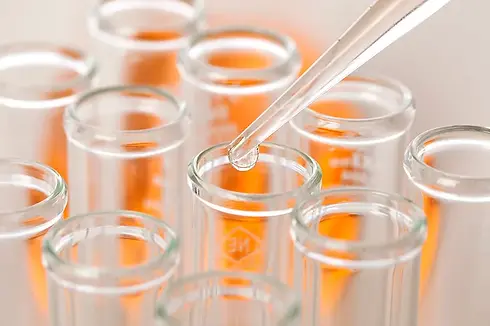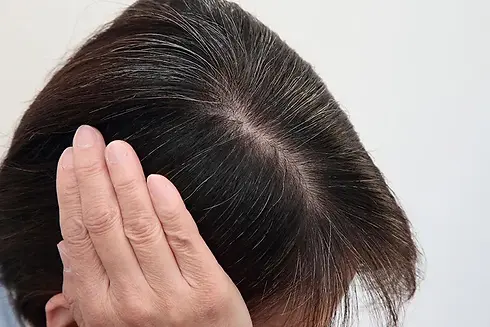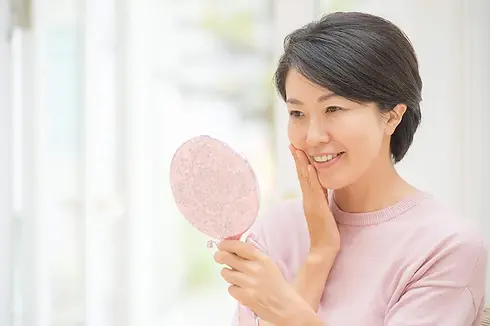
CELLS POWER
CELLS POWER is a premier concierge service specialising in discreet, exclusive, and seamless VIP experiences for high-net-worth clients seeking Japanese stem cell therapies .
We provide private transfers, professional medical interpretation, and fully customized itineraries—ensuring your journey is secure, comfortable, hassle-free, and trustworthy from start to finish.
Cells Power--VIP Stem Cells Therapy Services
Do you know the Japanese government enacted the Act on the Safety of Regenerative Medicine as early as November 2014?
It made Japan the world's first country to establish legislation specifically for stem cell therapies.

Do you know not everyone is suitable for stem cell therapy?
Before each treatment, we need to understand your health condition to determine a treatment plan. A comprehensive physical examination is required prior to implementation.

Services
Our Major Treatments
Gallery
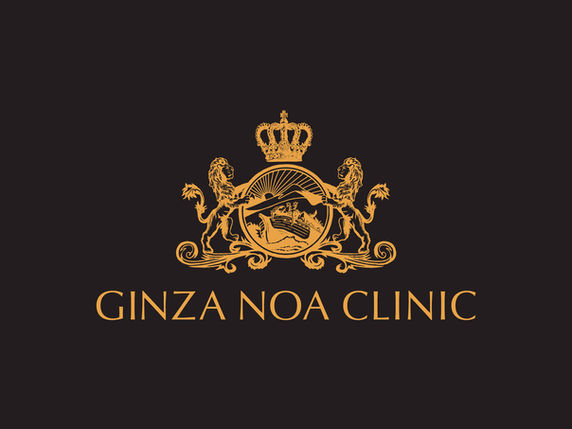





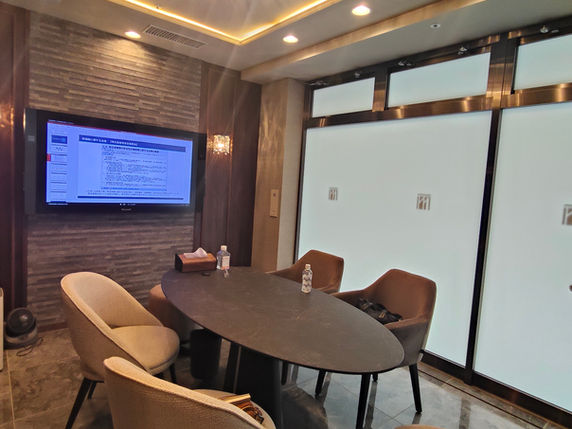



































Client Reviews
What Our Clients Say
״I may refuse to admit I’m getting older, but the truth is undeniable. While stem cell therapy remains illegal in many countries, Japan stands out as the most rigorously regulated and safest among nations where it’s approved. So go ahead and give it a try—honestly, I feel like I’ve turned back the clock!״
Mr. Ma
Private Business Owner, 56
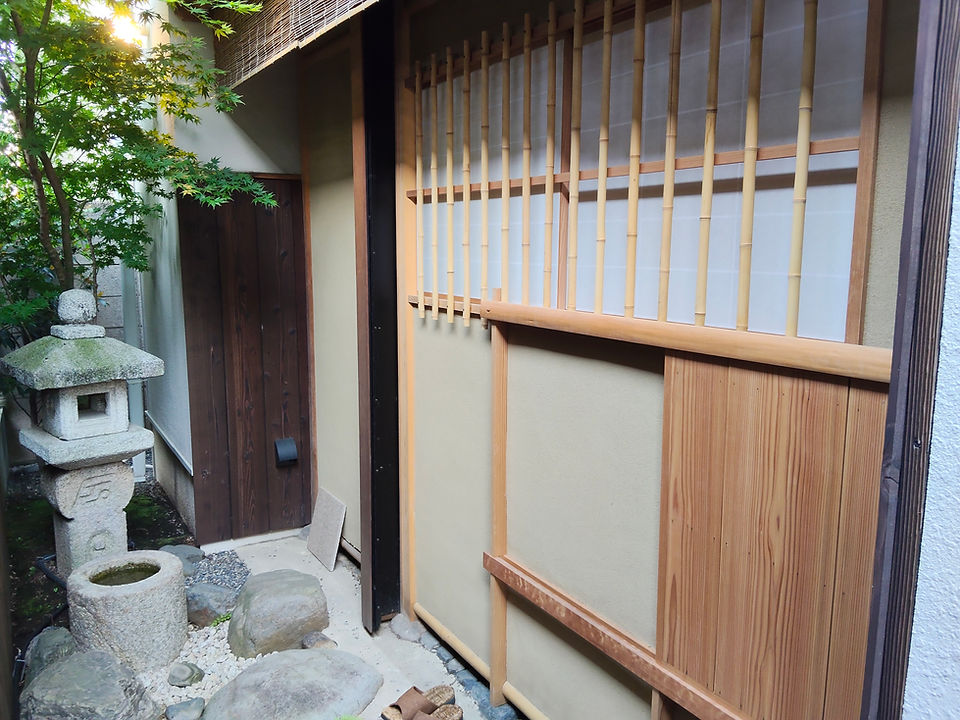
FAQs
Frequent Asked Questions
As people age, the number of stem cells in the body decreases drastically, leading to a sharp decline in the body’s regenerative capacity—this is aging. With fewer stem cells, individuals become more susceptible to various diseases. At birth, the human body contains approximately 6 billion stem cells, but by age 50, only about 300 million remain on average.
The homing effect of stem cells facilitates the repair of damaged tissues. This effect occurs when injured body parts secrete a series of substances that actively send 'distress signals.' Stem cells migrate toward and anchor at the damaged site via these signals, achieving systemic repair through differentiation, anti-inflammatory actions, and immune modulation.
Based on clinical case feedback in Japan, the following conditions are considered typical candidates for stem cell therapy: cardiac/pulmonary/hepatic/renal diseases, vascular conditions, immune disorders, skin issues, skin trauma, diabetes, aging-related concerns, pain, joint disorders, suboptimal health, and sleep problems.
The foundational principles of stem cell therapy are built upon the following defining characteristics of stem cells:
Self-Renewal Capacity: Stem cells undergo cell division to produce daughter cells genetically and phenotypically identical to themselves, thereby maintaining the stability of the stem cell pool.
Differentiation Potential: Stem cells possess the capacity to develop into specialized mature cell types with distinct functions under specific physiological or experimental conditions, such as neurons, cardiomyocytes, pancreatic beta cells, hematopoietic cells, osteocytes, chondrocytes, and others.
Paracrine Signaling: Stem cells secrete diverse bioactive factors—including cytokines, growth factors, exosomes, and chemokines—that mediate the following therapeutic actions:
*Modulation of immune responses (anti-inflammatory or immunosuppressive actions).
*Stimulation of endogenous repair cell proliferation and migration within tissues.
*Inhibition of apoptosis in target cells.
*Stimulation of angiogenesis (neovascularization).
*Modulation of the Extracellular Matrix (ECM)
The human body possesses inherent self-repair capabilities, allowing damaged or aged cells to undergo repair and regeneration. However, when confronted with severe injury or advanced aging, these intrinsic regenerative mechanisms often become impaired. Symptoms persisting after trauma or disease—termed sequelae such as paralysis—have historically been deemed irreversible.
Contrastingly, clinical studies utilizing stem cell therapies report significant improvement in conditions previously diagnosed as untreatable. Stem cell therapy represents the vanguard of medical advancement, holding revolutionary potential to transform treatment paradigms across numerous diseases, particularly in tissue regeneration and intractable disorders.
Its core mechanisms leverage:
Stem cell self-renewal
Multilineage differentiation capacity
Paracrine signaling effects to achieve:
Repair/replacement of damaged tissues/cells
Immunomodulation
Reactivation of endogenous regenerative programs
Consequently, this approach demonstrates clinically validated efficacy for the following conditions/injuries:
The Regenerative Potential: Holds promise for repairing or replacing functional cells and tissues permanently lost to disease, injury, or aging (e.g., neural, cardiac, hepatic, cartilaginous, and pancreatic beta cells) — a capability fundamentally unattainable through conventional pharmacotherapy.
Treatment of Intractable Disorders: Offers novel therapeutic prospects for numerous conditions currently lacking effective interventions—such as spinal cord injury, Parkinson’s disease, Alzheimer’s disease, amyotrophic lateral sclerosis (ALS), advanced heart failure, end-stage osteoarthritis, select forms of diabetes, and age-related macular degeneration—through regenerative mechanisms unattainable by conventional therapies.
Immunomodulatory Effects: Exhibit distinct therapeutic advantages in managing autoimmune disorders (e.g., Multiple Sclerosis, Rheumatoid Arthritis, Systemic Lupus Erythematosus) and preventing transplant rejection through bidirectional immune reprogramming.
Reduced Reliance on Pharmacotherapy: May decrease patients’ need for long-term drug regimens and associated side effects in specific clinical contexts.
Personalized Medicine Potential: Utilizing a patient’s own stem cells (autologous transplantation) circumvents immune rejection concerns.
Deeper Disease Mechanism Insights: Stem cell models (e.g., disease-specific induced pluripotent stem cells) facilitate the study of disease pathogenesis and drug screening.
By harnessing the self-renewal capacity, multilineage differentiation potential, and paracrine signalling effects of stem cells to repair or replace damaged tissues/cells, therapeutic effects in combating age-related decline can be achieved.
Cellular Renewal: Replenishment of functional cells (e.g., dermal fibroblasts, muscle satellite cells) in senescent tissues.
Paracrine Signalling Effects: Secretion of growth factors (e.g., VEGF, IGF-1) activates endogenous repair mechanisms and attenuates chronic inflammation.
Telomere Length Maintenance: Mesenchymal stem cells (MSCs) can extend telomere length.
Clinical studies demonstrate measurable improvements in the following age-related pathologies:
Cutaneous Aging: ↑30% dermal thickness with ≥50% wrinkle reduction (JAMA Dermatol 2023);
Sarcopenia: ↑15% walking speed and ↑20% grip strength (Phase I/II trials);
Metabolic Dysfunction: 27% improvement in insulin sensitivity (prediabetic cohort);
Immunosenescence: ↑ naïve T-cell proportion with 40% reduction in chronic inflammatory markers (e.g., interleukin-6).
Generally, the adverse effects of stem cell therapy primarily stem from safety risks, such as tumorigenicity—one of the most severe concerns. Pluripotent stem cells (PSCs), including embryonic stem cells (ESCs) and induced pluripotent stem cells (iPSCs; corresponding to Type 2/3 technologies mentioned earlier), possess unlimited proliferative capacity. If transplanted cells remain incompletely differentiated or are inadequately controlled in vivo, they may form teratomas or other malignancies. Genetic manipulation further amplifies these risks. Consequently, stem cell therapy is contraindicated for pregnant individuals and cancer patients.
Additionally, immune rejection poses a significant risk—particularly with allogeneic stem cell transplantation (corresponding to Type 2/3 technologies above). The recipient’s immune system may recognize and attack transplanted cells, potentially causing graft failure or life-threatening complications. This necessitates prolonged immunosuppression, which carries its own significant adverse effects.
Additional safety risks include: Ectopic Migration & Engraftment: Infused cells may fail to home to target tissues, instead lodging in non-target organs (e.g., pulmonary capillary beds, hepatic sinusoids) or forming aberrant structures. Infection Risk: Potential contamination during cell harvesting, ex vivo expansion, processing, or transplantation. Thromboembolism: Particularly with high-dose intravenous infusions (though exceedingly rare).
Finally, long-term safety uncertainties persist: many stem cell therapies remain in early-stage clinical trials, with their decades-long effects and potential delayed risks not yet fully characterized.
* Anti-inflammatory Action→ Treatment of inflamed areas, pain reduction, and swelling alleviation
* Angiogenesis & Vasculogenesis→ Prevention/improvement of arteriosclerotic diseases, Erectile Dysfunction (ED) enhancement
* Reactive Oxygen Species (ROS) Scavenging→ Fatigue recovery, prevention / improvement of lifestyle diseases, anti-glycation effects
*Immuno-enhancement→ Anti-tumour efficacy, infection resistance, treatment acceleration
* Immunomodulation→ Allergy mitigation, autoimmune disease management
* HSP Induction(Highly Sensitive Persons/Phenotype)→ Anti-tumour surveillance enhancement
* Neural Repair & Regeneration→ Cerebrovascular disease prevention /improvement, spinal cord injury recovery, dementia/Parkinson’s disease intervention
* Osteogenic Regeneration→Osteoporosis reversal, periodontitis management (alveolar bone restoration)
* Structural Protein Synthesis→ Cosmeceutical effects (skin rejuvenation, scar remodelling)
* Exosomal Functions→ microRNA-mediated anti-tumour activity
* Stem Cell Differentiation Potentiation→ Endogenous stem cell recruitment & lineage commitment
When classified by cell source, current technologies fall into the following three categories:
Autologous stem cell technology: Involves harvesting the patient’s own stem cells (e.g., from adipose tissue or bone marrow), processing them ex vivo, and subsequently readministering them to the patient.
Allogeneic stem cell technology: Utilizes stem cells from healthy donors (e.g., umbilical cord or placental sources), which undergo standardized ex vivo expansion before clinical application.
Induced Pluripotent Stem Cells (iPSCs): A technology involving the reprogramming of adult somatic cells (e.g., skin fibroblasts) into pluripotent stem cells, which are subsequently differentiated into target cell types.
Currently in Japan, clinically implemented stem cell therapies predominantly utilize autologous adipose-derived stem cells (ADSCs), while applications of allogeneic stem cells—particularly embryonic stem cells or induced pluripotent stem cells (iPSCs)—remain subject to stricter regulatory oversight or are confined to early-stage research. This landscape is closely linked to Japan’s regulatory framework, technology readiness levels, and clinical risk management protocols.
Japan is actively advancing iPSC technology to reduce costs and exploring allogeneic ‘off-the-shelf’ stem cell therapeutics (e.g., HeartSheet for cardiac disease). However, autologous adipose-derived stem cell therapies remain the market mainstream in the near term.
Advantages:
1. High Safety Profile: Autologous sourcing eliminates risks of immune rejection or pathogen transmission. Adult stem cells exhibit minimal tumorigenicity (significantly lower than embryonic stem cells).
2. Convenient Sourcing: Easy tissue accessibility: Minimally invasive liposuction with low donor-site morbidity. High stem cell yield: Adipose tissue contains 500× higher ADSC concentration than bone marrow.
3. Multi-Disease Therapeutic Potential:
· Orthopaedics: Knee osteoarthritis (promotes cartilage repair and alleviates pain)
· Plastic & Reconstructive Applications: Breast augmentation/Facial volumization, Burn wound healing, Scar remodelling
· Autoimmune Diseases: Rheumatoid arthritis, Crohn’s disease (via immunomodulation)
· Other Indications: Myocardial ischemia, Diabetic foot ulcers, etc.
4. Synergistic Fat Grafting: CAL technology (Cell-Assisted Lipotransfer) significantly enhances fat graft survival rates (achieving 50-80%).
Limitations:
1. Inadequate Technical Standardization: Insufficient regulatory oversight in certain countries results in non-uniform protocols for cell extraction and expansion, leading to compromised therapeutic consistency. Ex vivo expansion may alter stem cell properties (e.g., induced senescence, diminished differentiation capacity).
2. Efficacy Controversies: Most applications remain in clinical trial phases (only select areas like osteoarthritis have commercially approved products). Low cell survival rates (<20%) due to individual variability, with tissue repair primarily mediated through paracrine signaling rather than direct cellular replacement.
3. Safety concerns: Aberrant differentiation risks, including potential transformation into fibroblasts leading to tissue calcification or fibrosis. Embolic complications—though exceedingly rare—primarily associated with prolonged high-dose intravenous infusions. Unknown long-term safety profiles due to insufficient clinical follow-up beyond 10 years.
A single fat harvesting procedure yields sufficient cells for up to 10 treatment doses. The cultured cells can be stored in vapor-phase liquid nitrogen tanks (-156°C) at our partner CPC facilities for a maximum duration of 5 years. From the second year onward, an annual storage fee of ¥55,000 (tax inclusive) will apply per remaining treatment dose.
The Japanese government enacted the Act on the Safety of Regenerative Medicine as early as November 2014, making Japan the world's first country to establish legislation specifically for stem cell therapies. The government actively updates regulations based on feedback from medical institutions. Any cellular therapy must undergo approval and supervision by the Ministry of Health, Labour and Welfare (MHLW), resulting in a more standardized and safer framework compared to the disordered and unregulated cellular therapy markets in other countries.
CELLS POWER’s therapeutic protocol comprises: Adipose Tissue Harvesting →Enzymatic Digestion →Centrifugation Purification →In Vitro Expansion of ADSCs (4-6 weeks) →High-Purity Stem Cell Acquisition →Administration via Local Injection /Intravenous Infusion /Composite Grafting →In Vivo Therapeutic Actions (Cellular Differentiation & Replacement /Paracrine Signalling /Immunomodulation.
CELLS POWER primarily offers the following stem cell therapies: Autologous Adipose-Derived Stem Cell Injection、Stem Cell secretum Injection or IV Infusion、NK Cell Therapy.
In addition to stem cell therapy, we offer the following services: Chemical Peel Exfoliation & Revitalizing Massage、Stem Cell secretum Hydro facial Injections、Hyaluronic Acid Volumization for Male/Female Intimate Areas、Hair Regrowth Therapy for Thinning Scalp、Botulinum Toxin Type A Injections、Thread Lift Rejuvenation、High-Concentration Placental Extract Infusions、Chemical Peel Exfoliation & Revitalizing Massage.
The clinics partnered with CELLS POWER are directly-operated clinics under Japan's largest stem cell culture laboratory. They have passed the Pharmaceutical and Medical Devices Agency (PMDA) compliance review for cell culture facility pricing and hold accreditation from Japan's Ministry of Health, Labour and Welfare (MHLW) for both in-house and external stem cell culturing. Notably, very few institutions in Japan possess accreditation for external cell culturing services.
These clinics are licensed by Japan's Minister of Health, Labour and Welfare for regenerative medicine. They have formally submitted Category 2 and Category 3 Regenerative Medicine Provision Plans to the MHLW and obtained approval numbers. The stem cell regenerative medicine they employ—including its efficacy, safety, physician oversight systems, and cell processing management systems—has been reviewed and approved by the MHLW and rigorously evaluated by the Certified Special Committee for Regenerative Medicine.
The clinics contracted with CELLS POWER hold regenerative medicine accreditation issued by Japan's Ministry of Health, Labour and Welfare (MHLW) and operate their own large-scale stem cell cultivation facilities. Adipose tissue is processed immediately after extraction for seed cell isolation, ensuring no harmful chemicals or antibiotics are used throughout the process. Additionally, their proprietary 'mobile cultivation chamber' transportation technology allows stem cells to continue proliferating during transit as if in a lab environment, enabling damage-free transport.
Stem cell cultivation is the most critical aspect of stem cell therapy. CELLS POWER's partner clinics employ the following advanced, exclusive cell cultivation technologies:
1. Granular Cultivation:
Unlike the 'stacked cultivation' method used by other CPCs, CELLS POWER's clinics use granular cultivation, ensuring all cells grow on a single plane without overlapping. Cells remain distinct, fully absorb nutrients, and develop robustly.
2. Serum-Free Culture Medium:
While other CPCs use patient serum (risk of nutrient deficiency and contamination), CELLS POWER's clinics use high-cost, safer, and globally top-tier serum-free culture media.
3. Manual Precision Cultivation:
Unlike automated assembly-line methods used by other CPCs, CELLS POWER's clinics cultivate stem cells manually, ensuring optimal quantity and quality for each batch. Due to high costs, this method is exclusive to their direct-operated clinics.
4. <3 Generations Cultivation:
Industry standards require 6–8 generations to cultivate 100 million cells. CELLS POWER's technology achieves 250–300 million cells in ≤3 generations. Fewer generations yield younger, more potent cells with longer in vivo survival and superior efficacy.
5. Zero Harmful Additives:
While other CPCs rely on antibiotics/thawing agents, CELLS POWER's Class 100 aseptic environment and nutrient-rich media eliminate the need for any antibiotics or harmful drugs.
6. Double Washing & Non-Adhesion:
As cells age during proliferation, they tend to clump. CELLS POWER's unique cell rejuvenation technology maintains distinct, non-adhesive cell granules, enabling single-dose infusions of 250–300 million cells. Prior to infusion, cells undergo additional washing to ensure optimal condition.
Beyond technological excellence, CELLS POWER operates as a premier concierge institution exclusively serving high-net-worth clients with confidential, bespoke, and seamless VIP experiences. We orchestrate: Pre-trip medical consultations to finalize treatment plans、White-glove logistics coordination (flights/accommodations)、Chauffeured transfers via luxury fleet、Certified medical interpreters、Tailored itinerary curation— ensuring your journey embodies absolute peace of mind, comfort, convenience, and security at every stage.

